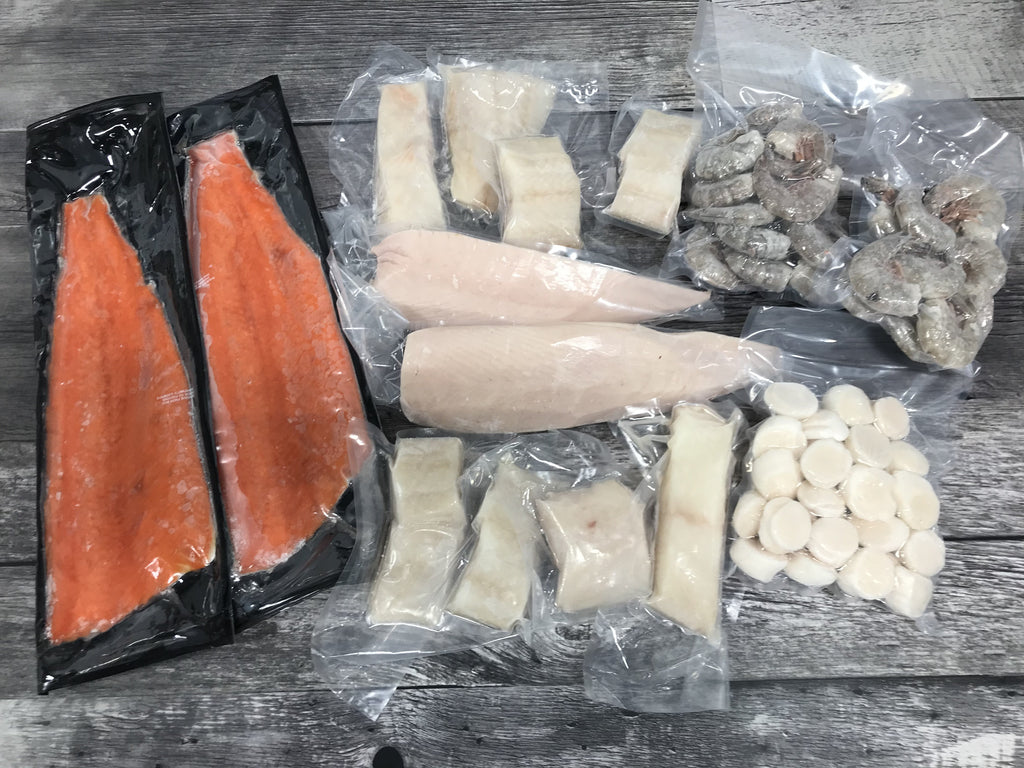Is Fresh Fish Better than Frozen?

The freshest seafood is that which has been frozen shortly after harvest and remains that way until cooked.- Jane Brody, nutrition columnist for The New York Times
Frozen fish is a great alternative to buying fresh and here is why.
Fish and seafood contain valuable proteins and fats, plus a lot of moisture which makes them highly nutritious foods but also prone to spoilage. When fish is handled well and properly frozen, the freshness is locked in and the bacterial and enzymatic decomposition processes which cause spoilage are arrested.
How Fish Are Frozen
Frozen-at-sea (FAS) fish are flash frozen, a natural preservation process in which seafood is laid on horizontal freezer plates that quickly bring the temperature down to -33 degrees C (-36 degrees F). Rapid freezing at ultra-low temperatures prevents the formation of the large ice crystals that damage the cell walls and result in fluid loss when the fish is thawed, and a dry and fibrous product when cooked.
When the fish are flash frozen, they are placed on freezer plates and then immediately after freezing they are dipped in water to create a protective coating of ice (glaze) that forms on the fish. Introducing a protective barrier at the surface of the fish reduces the loss of moisture which contributes to freezer burn and slows the rate at which the fish fats and oils oxidize and give rise to undesirable taste, colour and odour characteristics. A properly flash frozen fish will have bright, firm, and elastic flesh with the flavour and nutritional value of one just caught. Freezing seafood also meets Canadian Food Inspection Agencies (CFIA) criteria for safe raw consumption allowing certain seafoods to be used for sashimi/sushi.
Fun Fact: American inventor, entrepreneur, and naturalist Clarence Birdseye, considered the “father of the modern frozen food industry”, originally created the technology to freeze fish!
Seasonal Fish to Enjoy Anytime
Freezing extends the season for seafood. When you’re craving fish caught in the summer, like wild salmon or ling cod, that delicious treat will be available to you anytime. Nothing beats frozen fish when it comes to convenience. We transform our whole frozen fish into vacuum-packaged fillets and portions so that you use only what you need. Reducing food waste is important as one-third of all fish at seafood counters gets thrown out.
We maintain a broad range of premium, sustainably and responsibly produced seafood in our cold storage facility which is held at a constant -18 degrees C (-10 degrees F). To ensure the cold chain is uninterrupted, we deliver in refrigerated vehicles or for long distances pack our frozen seafood in dry ice for shipping.
How to Prepare Frozen Fish for Cooking
For best results, before cooking frozen fish and seafood, thaw in the refrigerator overnight by removing the frozen seafood from its packaging or by making a slit in the packaging. In the event you’re in a hurry, place it in a zip-top bag and immerse it in running cold water.
Why Frozen Fish?
Frozen-at-sea fish (FAS) or purpose-frozen seafood locks in the freshness and flavour. For sushi and sashimi lovers, the deep freeze process makes fish and seafood safe for raw consumption. It also allows you to enjoy seasonal fish and seafood year-round.

